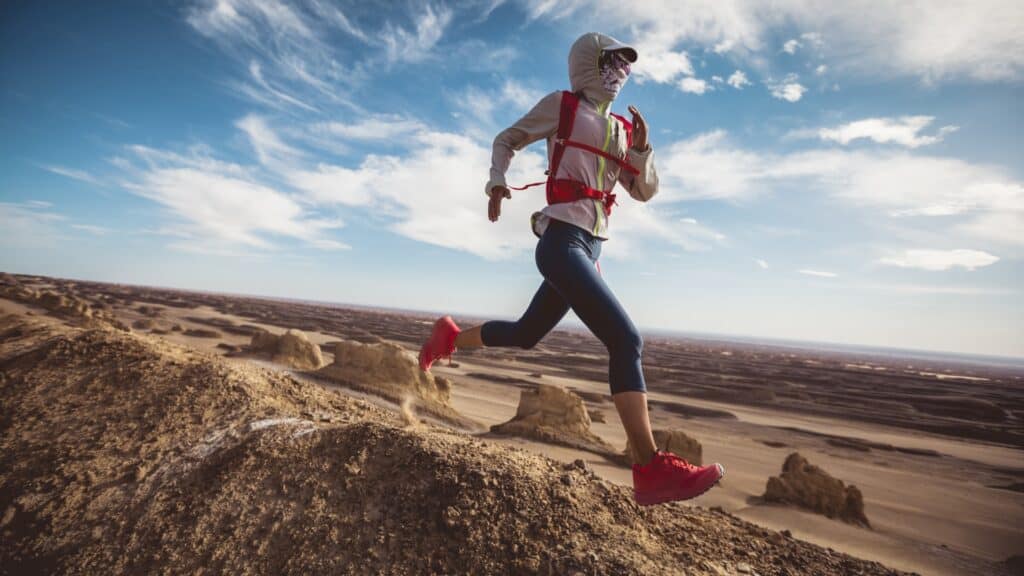Trail running is a fantastic way to connect with nature, challenge yourself, and stay fit.
However, it can also be tough on your ankles, especially when navigating uneven terrains.
In this article, we’ll dive into effective strategies to strengthen your ankles and offer some nutrition tips for trail running.

Protecting Your Ankles: The Basics
1. Proprioception Training
Proprioception refers to your body’s ability to sense its position in space. Improving proprioception can help prevent ankle injuries by enhancing your balance and stability.
Gym Exercises:
- Stability Pads: Most gyms offer stability pads, hedgehogs, or bosu balls. Try standing on these for 30-60 seconds on each leg without shoes. Initially, you might feel wobbly, but with practice, your ankle stability will improve.
- Advanced Balancing: Once you’re comfortable, have someone toss tennis balls or similar objects at you to catch. This added challenge will make the exercise more difficult and enhance your ankle stability.
- Closed-Eye Balancing: For an even greater challenge, try balancing on stability pads with your eyes closed. This will further improve your proprioception.
Home Exercises:
- Pillow Stacking: If you don’t have gym access, stack 2-4 pillows on the floor and try balancing on them without shoes. The more pillows you stack, the more unstable the surface, which will challenge your ankle stability similarly to stability pads.
2. Strengthening Ankle Muscles
If you’ve previously injured your ankles, strengthening the muscles around them is crucial.
Theraband Exercises:
- Foot Push/Pull: Use a stretch cord or theraband to perform foot push (away from you) and foot pull (towards you) exercises. These exercises target the muscles that support your ankles.
Professional Guidance:
- Consult a Biokineticist or Personal Trainer: To ensure you’re doing the exercises correctly and effectively, it’s wise to seek guidance from a biokineticist or a certified personal trainer.

Nutrition for Trail Running: Fueling Your Body
When it comes to long-distance trail running, nutrition plays a pivotal role in sustaining your energy levels and performance.
1. Carbohydrate Intake
During long runs or multi-day events, aim to consume between 60 and 90 grams of carbohydrates per hour.
Sources of Carbohydrates:
- Gels: Easily digestible and portable, energy gels are a popular choice for quick carbs during runs.
- Energy Drinks: Look for drinks designed for endurance athletes that provide both hydration and carbohydrates.
- Solid Foods: Unlike road running, trail running’s lower intensity makes it easier to eat solid foods. Consider snacks like biscuits, peanuts, or small sandwiches for a mix of quick and sustained energy.
2. Post-Run Nutrition
After your run, refueling is crucial to aid recovery and prepare for your next training session.
- Immediate Refuel: Aim to consume a balanced meal with carbohydrates, protein, and healthy fats within 30 minutes to an hour post-run.
- Hydration: Don’t forget to hydrate! Replenish lost fluids with water or electrolyte drinks.
Trail running offers a unique set of challenges and rewards. By incorporating proprioception training and ankle-strengthening exercises into your routine, you can significantly reduce the risk of ankle injuries. Additionally, paying attention to your nutrition, both during and after runs, will help you perform at your best and recover effectively.



Comments are closed.